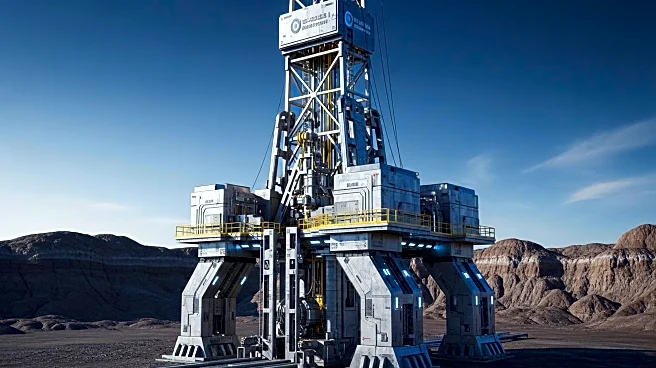What's Happening?
Caturus Energy, a natural gas-focused exploration and production company, has announced a multi-year contract with Nabors Industries to deploy the PACE-X Ultra™ X33 rig, the most powerful onshore drilling system currently in the United States. This rig is designed to deliver more power and efficiency in challenging drilling environments, featuring a one million-pound mast rating and racking capacity of up to 35,000 feet. The rig also includes three 2,000-horsepower mud pumps capable of 10,000 psi mud pressure. By substituting natural gas for diesel using Cat® Dynamic Gas Blending technology, the rig improves fuel efficiency and reduces emissions. This deployment marks a significant milestone in Caturus Energy's commitment to ramping up production safely and efficiently, with a goal to grow net production to 1 billion cubic feet of gas equivalent per day by 2029.
Why It's Important?
The deployment of the PACE-X Ultra™ X33 rig represents a major advancement in onshore drilling technology, potentially setting new industry benchmarks for operational safety, efficiency, and environmental responsibility. This initiative aligns with broader efforts to transition to lower-carbon energy production, as the rig's use of natural gas over diesel reduces carbon intensity. For Caturus Energy, this move supports their strategic goal of increasing production capacity, which could enhance their competitive position in the natural gas market. Additionally, the collaboration with Nabors Industries highlights the importance of technological innovation in meeting modern energy demands and addressing environmental concerns.
What's Next?
Caturus Energy plans to continue scaling its production capabilities, aiming to reach 1 billion cubic feet of gas equivalent per day by 2029. The successful deployment of the PACE-X Ultra™ X33 rig may encourage further investments in advanced drilling technologies, potentially influencing industry standards and practices. Stakeholders, including environmental groups and industry competitors, will likely monitor the rig's performance and its impact on emissions reduction closely. As the energy sector continues to evolve, similar technological advancements could play a crucial role in shaping future energy production strategies.










